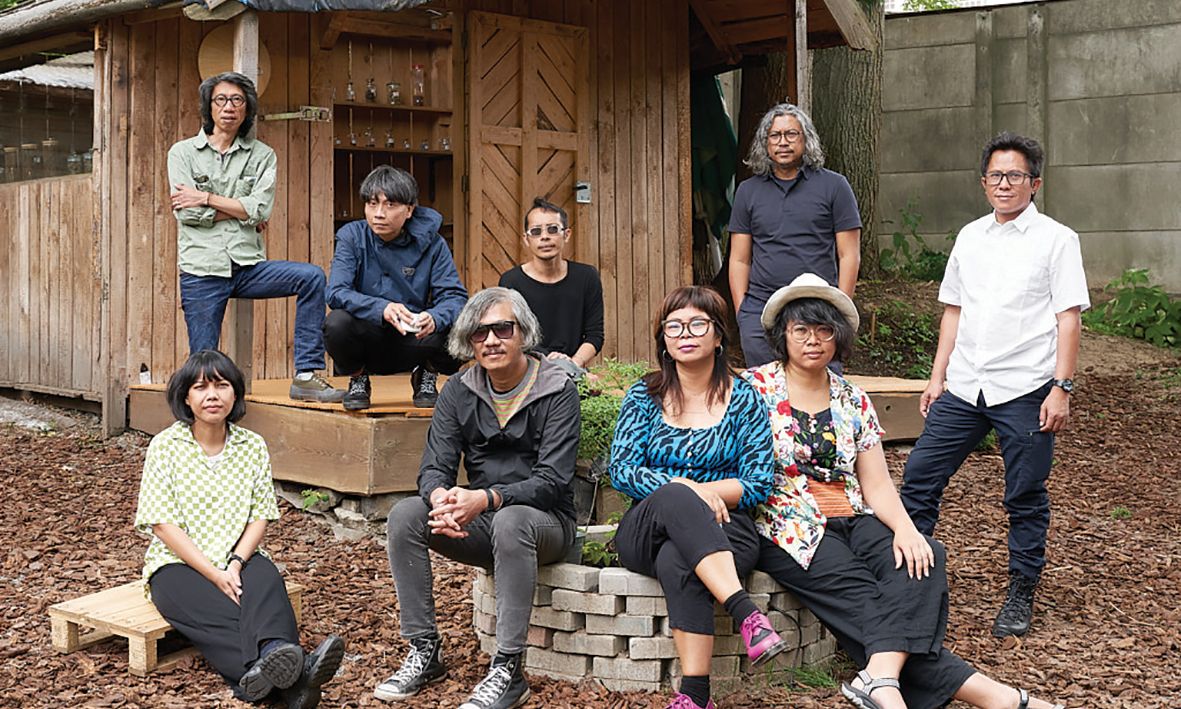Artist collective ruangrupa believes some people “wanted the exhibition to fail” Photo: Nicolas Wefers
Last month a 133-page report on the antisemitism controversy that engulfed last year’s documenta 15 in Kassel was published, providing “a well-founded and in-depth analysis of the events that shook [the quinquennial exhibition]”, says Christian Geselle, chair of the documenta 15 supervisory board.
The report—compiled by a committee of seven experts in art, antisemitism research, conflict studies, law and political science—confirmed that some works on display at documenta 15 “convey statements that can or must be interpreted as antisemitic”. Committee members included Julia Bernstein, a sociology professor at the Frankfurt University of Applied Science, and the psychologist Marina Chernivsky.
While previous editions of the influential exhibition have courted controversy, none in recent history have proved quite as incendiary as the most recent iteration. Documenta 15 was curated by the Indonesian ruangrupa, an artist collective founded over 20 years ago in Jakarta. Its curatorial concept was based around the lumbung (the Indonesian word for rice barn), which pertains to ideas of collectivism and resource sharing.
Ruangrupa presented artistic perspectives from the Global South, examining the consequences of racism, colonialism and capitalism. But before the opening, two antisemitic images in the monumental work People’s Justice (2000), by the Indonesian artist collective Taring Padi, sparked a furore.
At first the work was only covered up, but was then removed in June following a backlash. In the weeks that followed, accusations of antisemitism were also made against other works in the show. The calls for Sabine Schormann, then general director of documenta, to resign became ever louder and in July she stepped down.
The experts’ report says that “clear visual antisemitic codes” can be found in People’s Justice by Taring Padi and a drawing by the late Palestinian cartoonist Naji al-Ali presented by the collective Archives des luttes des femmes en Algérie, an initiative aiming to build a digital archive of documents relating to Algerian feminist collectives.
The report also examined the works Tokyo Reels and Mohammed Al-Hawajri’s Guernica Gaza series, concluding that they “can also plausibly be considered antisemitic in the sense of Israel-related antisemitism”. In September, the advisory council for documenta 15 said that “the most urgent task” was to stop showing Tokyo Reels, a set of restored films by the cinema research and production collective, Subversive Film.
The collective aims to shed light on “the overlooked and still undocumented anti-imperialist solidarity between Japan and Palestine”, the documenta website states. But members of the finding committee for the artistic direction of documenta 15—including the Tate Modern director Frances Morris—condemned the advisory group’s decision to try and pull the works.
In certain parts, however, the report also highlights the challenge of defending artistic freedom. “The supervisory board particularly welcomes the clear classification of the criticised works and the pinpointing of the area of tension between constitutionally protected artistic freedom and, at the same time, responsible handling of antisemitic representations in this context,” adds Christian Geselle in a statement.
The report also states that the reactions of the management “were not commensurate with the seriousness of the situation and rather exacerbated it”, proposing six measures. In the run up to documenta 16, which will be held in 2027, the focus will be on setting standards linked to artistic freedom and its limits; on addressing any group-specific form of misanthropy, such as anti-semitism, racism and antiziganism (anti-Indian sentiment); on re-adapting the organisation and committee structures and on defining the curatorial framework and artistic direction of the event. A new managing director, Andreas Hoffmann, takes up his position in May.
In an interview with The Art Newspaper in September, ruangrupa said: “We think that the fallout raised important questions. Can we change control with trust? Can we adapt hierarchy structures to create another meaning of responsibility? We think there were people who wanted this exhibition to fail.”

